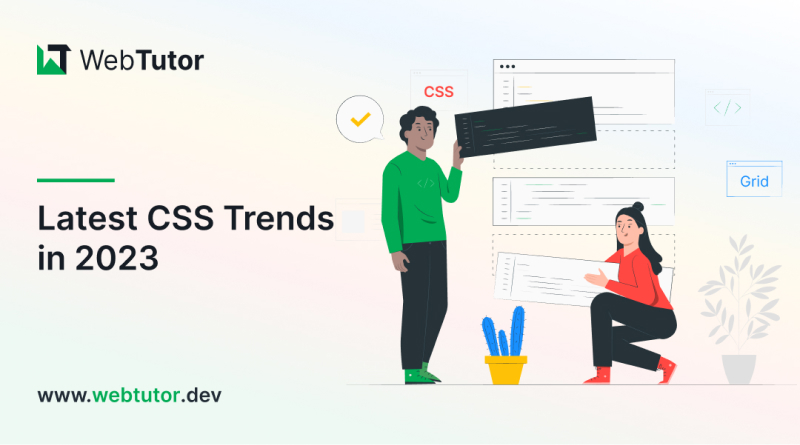When it comes to web design, CSS is the backbone that brings visual appeal and interactivity to the forefront. CSS, short for Cascading Style Sheets, is a style sheet language used to describe the look and formatting of a document written in HTML. It allows web designers to control the colors, fonts, layouts, and overall aesthetics of a website. Without CSS, the web would be a bland and uninteresting place.
CSS has come a long way since its inception, constantly evolving to meet the demands of modern web design. Each new version introduces exciting features and capabilities that push the boundaries of what is possible. By staying up to date with the latest version of CSS, you can ensure that your websites are not only visually stunning but also optimized for performance and user experience.
Understanding the Latest Version of CSS
As of 2023, the latest version of CSS is CSS3. CSS3 builds upon the foundation of previous versions, introducing a wide range of new features and enhancements. From advanced selectors and media queries to animations and transitions, CSS3 empowers web designers with a rich set of tools to create beautiful and engaging web experiences.
One of the key advantages of CSS3 is its compatibility with modern browsers. With widespread support across major browsers, including Chrome, Firefox, Safari, and Edge, you can confidently leverage the latest CSS3 features without worrying about compatibility issues. This opens up a world of possibilities in terms of design innovation and creativity.
The Impact of Graphic Design Trends on CSS
In the dynamic world of web design, graphic design trends play a significant role in shaping the direction of CSS. As new design trends emerge, web designers seek to incorporate them into their CSS stylesheets to stay relevant and deliver visually captivating websites.
Looking ahead to 2023, we can expect several graphic design trends to influence CSS practices. One such trend is the use of bold and vibrant colors. Gone are the days of muted and monochromatic palettes. Web designers are embracing vibrant hues and contrasting color combinations to create eye-catching designs that grab attention.
Another trend that will impact CSS is the use of organic shapes and fluid layouts. Traditional boxy designs are being replaced by more fluid and asymmetrical layouts that mimic the organic shapes found in nature. CSS provides the flexibility and adaptability needed to bring these designs to life, allowing elements to flow and interact seamlessly.
The Hottest CSS Trends in 2023
Now that we've explored the connection between graphic design trends and CSS, let's dive into some of the hottest CSS trends to look out for in 2023.
Micro-Animations
Micro-animations are subtle, yet delightful animations that enhance the user experience. From animated buttons and hover effects to progress indicators and loading animations, micro-animations add a touch of interactivity and personality to a website. CSS3's animation and transition properties make it easy to implement these micro-animations without relying on heavy JavaScript libraries.
Dark Mode Support
With the rise in popularity of dark mode, web designers are incorporating CSS techniques to provide an optimal viewing experience in both light and dark modes. CSS variables and media queries allow for dynamic styling based on the user's preference, ensuring that websites look great regardless of the chosen mode.
3D and Parallax Effects
CSS3 transforms and transitions enable the creation of immersive 3D effects and parallax scrolling. These techniques add depth and dimension to web pages, making them visually engaging and memorable. By leveraging CSS3's 3D capabilities, web designers can create interactive experiences that captivate users.
Variable Fonts
Variable fonts are a game-changer in typography. They allow for the manipulation of various font properties, such as weight, width, and slant, resulting in more dynamic and customizable typography. With CSS3's @font-face rule and support for variable fonts, web designers can elevate their typographic designs to new heights.
Incorporating New CSS Features Into Your Web Design
Now that you're aware of the hottest CSS trends in 2023, it's time to explore how to incorporate these new features into your web design projects. Here are some tips to help you get started:
Stay Informed
Keep up with the latest CSS developments by following reputable web design blogs, attending conferences, and participating in online communities. The web design landscape is constantly evolving, and staying informed is crucial to stay ahead of the curve.
Experiment and Play
Don't be afraid to experiment with new CSS features and techniques. Creating small prototypes or side projects allows you to explore the possibilities and gain hands-on experience. By pushing the boundaries of what CSS can do, you'll discover unique ways to enhance your web designs.
Progressive Enhancement
When incorporating new CSS features, it's essential to ensure graceful degradation for older browsers that may not support these features. Use feature detection techniques and provide fallback options to ensure a consistent experience for all users.
How to Stay Updated With CSS Trends
To stay ahead of the curve and continually incorporate the latest CSS trends into your web design, consider the following strategies:
Follow Industry Leaders
Keep an eye on influential web designers and developers who are at the forefront of CSS innovation. Follow them on social media, subscribe to their blogs, and learn from their insights and experiences.
Join Online Communities
Engage with the web design community through forums, Slack channels, and online communities. These platforms provide a space to share ideas, ask questions, and stay updated on the latest CSS trends.
Attend Conferences and Workshops
Attend web design conferences and workshops where industry experts share their knowledge and insights. These events offer opportunities to network with like-minded professionals and gain valuable insights into the latest CSS trends.
The Future of CSS and its Role in Web Design
As we look ahead to the future, CSS will continue to play a crucial role in web design. With each new version and update, CSS evolves to meet the changing needs of the web design industry. As technologies advance and user expectations evolve, CSS will adapt to provide new ways for web designers to create stunning and immersive web experiences.
The future of CSS holds exciting possibilities, from improved performance optimizations to more advanced layout and styling options. As web designers, it's essential to embrace these changes and continually update our skills to stay relevant in the ever-evolving world of web design.
Resources for Learning and Mastering New CSS Techniques
To learn and master new CSS techniques, here are some valuable resources to explore:
- CSS-Tricks: A comprehensive web design blog that covers a wide range of CSS topics, from beginner tutorials to advanced techniques. CSS-Tricks offers in-depth articles, video tutorials, and a vibrant community of web designers and developers.
- WebTutor: WebTutor is a reliable resource for learning about CSS and other web technologies. It provides detailed documentation, tutorials, and examples to help you understand and implement CSS features effectively.
- CodePen: CodePen is an online code editor and community where you can explore, experiment, and share CSS code snippets. It's a fantastic resource for discovering new CSS techniques and learning from others in the web design community.
Conclusion
The future of CSS is bright, and by embracing these trends, you can elevate your web designs to new heights. So go ahead, dive into the world of CSS, and create breathtaking web experiences that leave a lasting impression on your users.
Start embracing the latest CSS trends today and take your web design to the next level!

